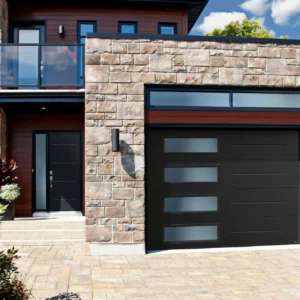In today’s environmentally conscious world, energy efficiency is a crucial consideration for homeowners and building owners alike. One significant factor that influences energy efficiency in buildings is the type of roofing material used. From traditional asphalt shingles to innovative green roofs, the choice of roofing material can greatly impact insulation, heat absorption, and overall energy consumption. This article explores how roofing materials affect energy efficiency and highlights key considerations for choosing the right material.
Understanding Roofing Materials
Roofing materials vary widely in their composition, durability, and energy efficiency properties. Here are some common types:
Asphalt Shingles
Asphalt shingles are popular due to their affordability and ease of installation. However, they vary in their energy efficiency based on color and composition. Light-colored shingles reflect more sunlight, reducing heat absorption and cooling costs.
Metal Roofing
Metal roofs are durable and reflective, making them excellent for reducing heat gain. They are available in a variety of finishes and colors, some of which are designed to meet ENERGY STAR® criteria for cool roofing.
Clay and Concrete Tiles
These materials are known for their durability and aesthetic appeal. They provide excellent insulation but can be heavier than other materials, requiring adequate structural support.
Slate Roofing
Slate roofs are prized for their longevity and natural beauty. They offer good insulation properties but can be costly and require professional installation due to their weight.
Green Roofs
Green roofs are an eco-friendly option that involves planting vegetation on the roof surface. They provide natural insulation, reduce stormwater runoff, and improve air quality.
Factors Affecting Energy Efficiency
Insulation Properties
Roofing materials differ in their ability to insulate. Materials with higher R-values provide better thermal resistance, reducing heat transfer between the interior and exterior of a building.
Reflectivity and Absorption
Reflective roofing materials, such as metal roofs with light-colored finishes, bounce sunlight away from the building, keeping interiors cooler. Conversely, absorptive materials like dark-colored asphalt shingles absorb heat, increasing cooling demands.
Energy Efficiency Ratings
Cool Roofing Technologies
Cool roofing refers to materials designed to reflect more sunlight and absorb less heat than standard roofing materials. They help reduce urban heat island effect and lower cooling costs.
ENERGY STAR Ratings
The ENERGY STAR program certifies roofing materials that meet specific criteria for energy efficiency. Choosing ENERGY STAR-rated materials can lead to significant energy savings and may qualify for rebates or incentives.
Environmental Impact
Sustainability
Many homeowners are opting for sustainable roofing options made from recycled or renewable materials. These materials often have a lower environmental impact throughout their lifecycle.
Carbon Footprint
Roofing materials contribute to a building’s overall carbon footprint. Choosing materials with low embodied energy and long lifespans can help mitigate environmental impact.
Cost Considerations
Initial Costs vs. Long-term Savings
While energy-efficient roofing materials may have higher initial costs than traditional options, they often provide substantial long-term savings through reduced energy bills and maintenance costs.
Case Studies and Examples
Real-life Examples
In cities like Los Angeles and Phoenix, cool roofs have been shown to reduce peak cooling demand and improve air quality. Homeowners report lower energy bills and increased comfort levels year-round.
Conclusion
Choosing the right roofing material is crucial for enhancing energy efficiency and reducing environmental impact. Whether opting for reflective metal roofs or sustainable green roofs, each choice contributes to overall building performance and occupant comfort. As technologies evolve and environmental awareness grows, the importance of selecting energy-efficient roofing materials will continue to shape the future of construction and sustainability. When making these decisions, consulting with a one-stop roofing company can provide valuable insights and options tailored to your specific needs and goals.


